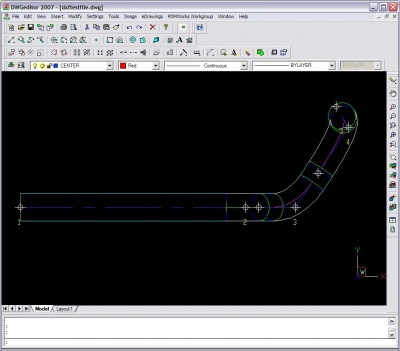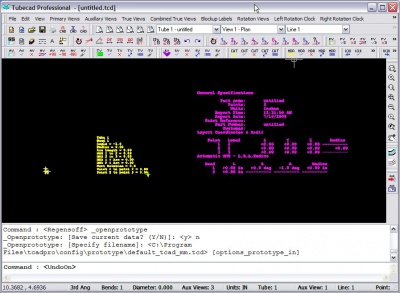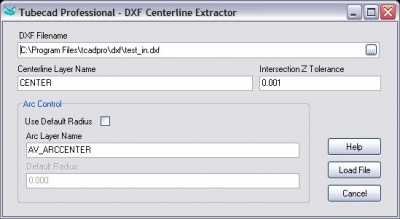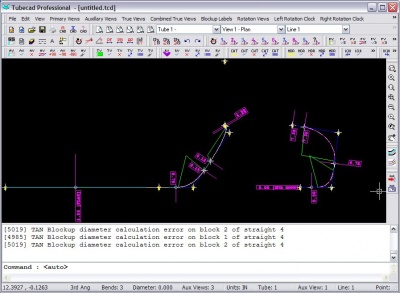Difference between revisions of "TubeCAD - Importing DXF Files"
(→Step 2: Load TubeCAD Pro and Initialize the Units) |
(→Step 3: Start the DXF File Import Feature) |
||
| Line 45: | Line 45: | ||
== Step 3: Start the DXF File Import Feature == | == Step 3: Start the DXF File Import Feature == | ||
| + | |||
| + | <table> | ||
| + | <tr> | ||
| + | <td width="200"> | ||
In the File pulldown menu, select the Import - DXF File command. Select the DXF file to import then press OK. | In the File pulldown menu, select the Import - DXF File command. Select the DXF file to import then press OK. | ||
| − | |||
| − | |||
<br><br> | <br><br> | ||
*Select DXF file. | *Select DXF file. | ||
*Select the centerline layer name and the centerline arc layer name | *Select the centerline layer name and the centerline arc layer name | ||
*Press "Load File" | *Press "Load File" | ||
| + | </td> | ||
| + | <td> | ||
| + | [[image:tcadpro_dxfimport3.jpg|400px]] | ||
| + | </td> | ||
| + | </tr> | ||
| + | </table> | ||
== Step 4: Organize the Layout == | == Step 4: Organize the Layout == | ||
Revision as of 16:31, 10 July 2009
Contents |
TubeCAD can import DXF files directly. The DXF import feature in TubeCAD...
- Imports the DXF data
- Sorts the centerline segments into the proper order
- Performs 3D intersection between the intersecting lines
- Detects and removes inherent intersection errors
Step 1: Export the Drawing as a DXF from the General CAD Package
|
Design the tube in general CAD package. This is an image of the DWGeditor program from SolidWorks. It is based on the CADopia software package.
|
Step 2: Load TubeCAD Pro and Initialize the Units
|
Step 3: Start the DXF File Import Feature
|
In the File pulldown menu, select the Import - DXF File command. Select the DXF file to import then press OK.
|
Step 4: Organize the Layout
The display will change. It may look something like this. If you see nothing, then press the Zoom Extents feature.
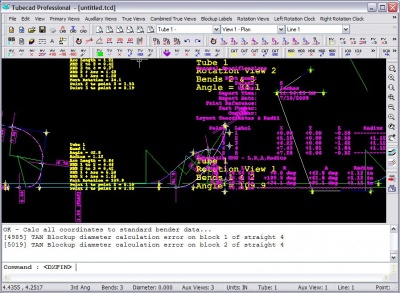
- Type the word "auto" in the command line and press the Enter key.
- Enter "4" and press Enter. This selects the most comprehensive formatting available for TubeCAD Pro layouts.
- The layout will reorganize itself like this:
Step 5: Set the Diameter
The incoming data will not contain a diameter, so you can set that value in the General Spec menu.
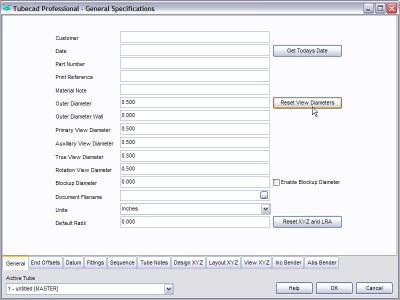
- Either press the GS button or type "spec" and press Enter.
- Enter the diameter in the Outer Diameter field
- Press the "Reset View Diameters" button.
- Press the OK button at the bottom of the window
The image will display something like this:
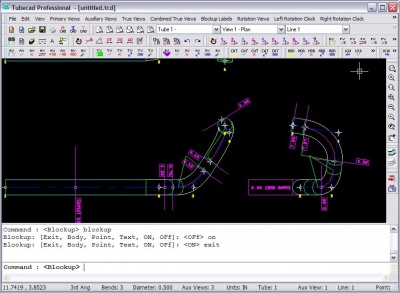
Step 6: Zoom Extents
Zoom to the extents to see the entire layout.
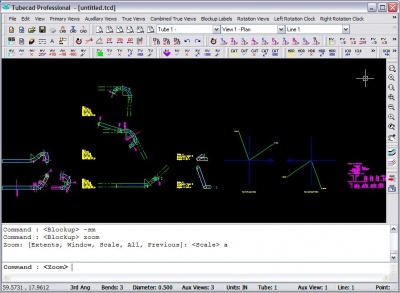
Other Pages
Go back to TubeCAD Pro
